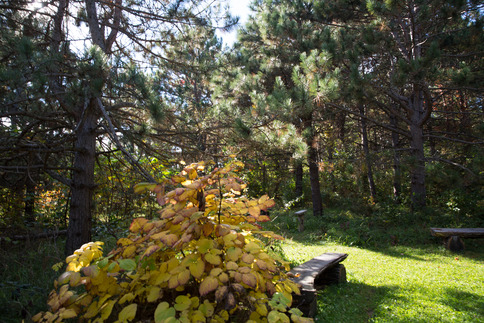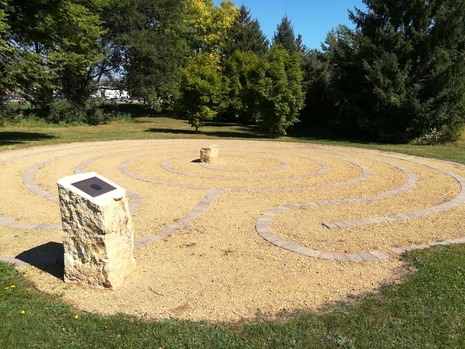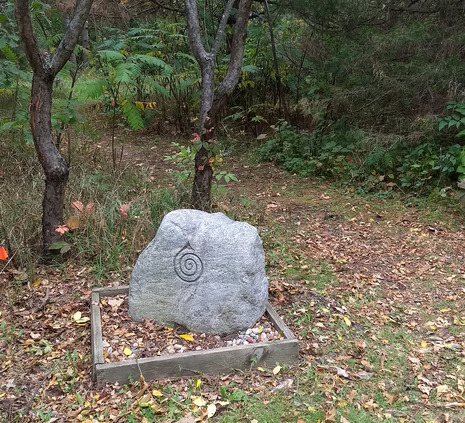Labyrinth and Meditation Garden
A labyrinth is an ancient tool used to facilitate prayer and meditation. Labyrinths are found in many cultures and in many faith traditions, and provide an opportunity for quiet reflection. Unlike a maze, a labyrinth has only one clear path. Gustavus has one labyrinth, located in the Linnaeus Arboretum. The labyrinth can be found in the open fields to the west of the Melva Lind Interpretive Center.
There is no wrong way to walk a labyrinth. Some people prefer to break their walk into three distinct sections. In the first section, when entering the labyrinth, you release or purge thoughts and distractions. Next, when you arrive at the center, you participate in illumination or receiving. You may stay in the center, a place for prayer and meditation, as long as you like. Finally, when returning and leaving the labyrinth, you have the opportunity to reflect on your experience and make new insights and connections. However you choose to walk a labyrinth, it can be useful to walk slowly and to focus on your breathing.

The meditation garden is open to all and has spaces to sit, walk, and engage in contemplative and spiritual practices in the natural beauty of the arboretum. The entrance is marked by a large stone, pictured on the right.

Meditation calms our bodies and minds and cultivates compassion for ourselves and others. A meditation garden is a quiet space for mindfulness, reflection, and prayer. Gustavus has a meditation garden in the Linneaus Arboretum. The meditation garden can be found in the hardwood forest to the north of the Borgeson Family Cabin.
